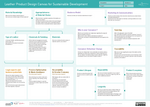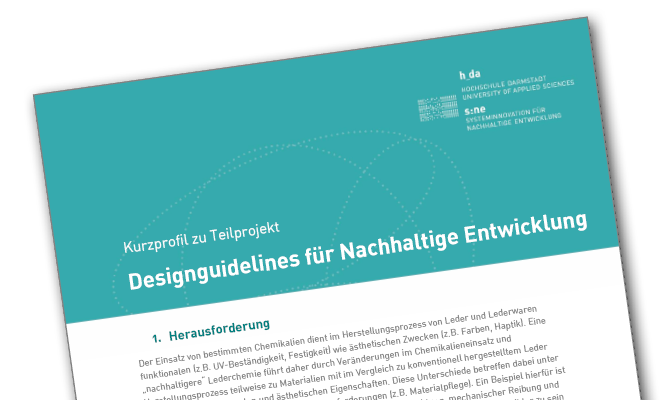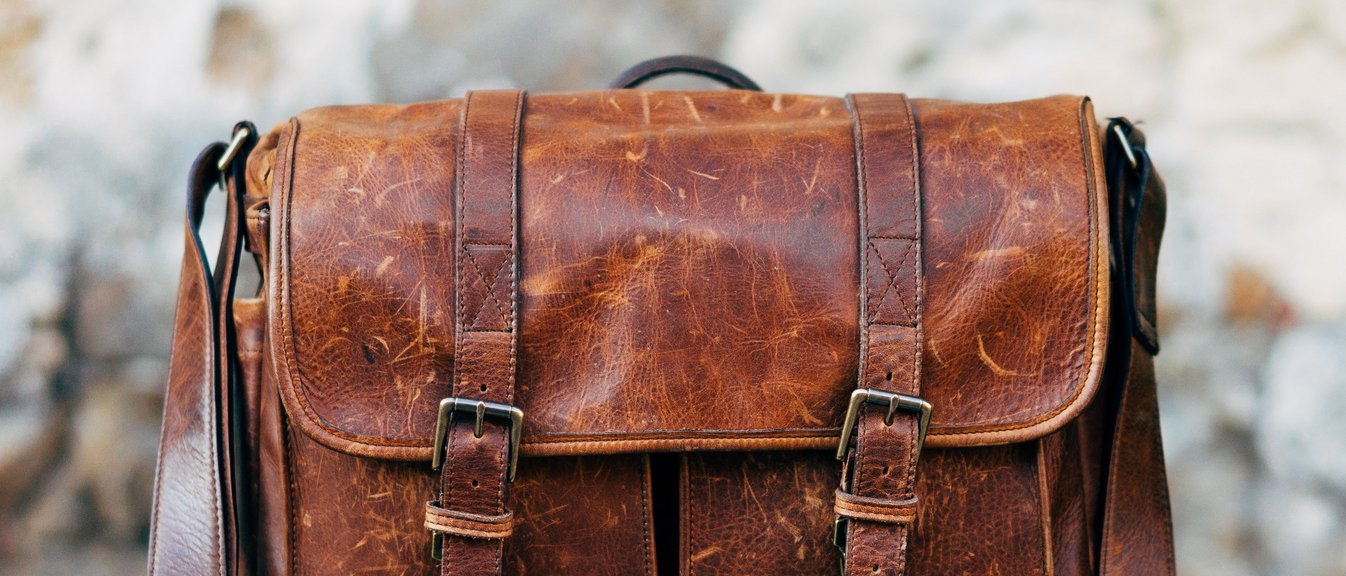
Leather Designguidelines for Sustainable Development
Results of Subproject
Two hands-on tools for industry and academia to inform their product design processes
Focusing on the role of product- and service design in the context of a more sustainable leather chemistry, this subproject ended with two open access tools for industry and academia alike: The “Handbook of Leather Design for Sustainable Development” is a comprehensive compendium written by experts from industry, academia and NGOs. It covers on 242 pages in six chapters a broad range of topics including the leather supply chains, historical aspects and consumer psychology.
A spin-off of this document is the “Leather Product Design Canvas” – an A3-PDF template that aims at supporting the product design process by broadening the scope and highlighting relevant topics, interrelations and key questions. A manual can be found in the Handbook on page 201.
Both tools have been field tested in an international design competition and mentoring program organised by the project team. 14 participants from 4 countries received an extensive mentoring by experts form industry and academia.
Challenges
Leather is a complex material with many subcategories regarding the type of leather, tanning processes applied, the hides used and many other aspects. Used in leather goods such as shoes, bags and furniture, this complexity is even increased by design decisions regarding the sourcing of the material, tanning agents but also conceptual and aesthetic features such as the connection of materials (e.g. clueing and stitching) and finishing.
In a wider sense, there are two overarching perspectives from which leather goods can be designed and produced in a more sustainable way.
1. General Aspects of Sustainable Development in Leather Goods
Leather by default offers potentials to render a product more sustainable in contrast to faux leather or other materials. These potentials relate to the genuine characteristic and functionality of the material leather. For instance, the process of tanning aims at conserving raw hides and rendering them durable. In this way, when processed according to the state of the art in leather manufacturing, leather can be seen as a long-lasting and easy to repair material that poses a good material base for the approach of design for longevity. Furthermore, based on the current global consumption patterns regarding meat and dairy products, leather is made from resources that would other wise end up as waste. It relates to an ancient history of leather and cultural practises and thus offers design potentials for design strategies such as product attachment.
2. Specific Properties and Potentials of “Sustainable Leather”
As of now, there is a controversial discourse on the notion of “more sustainable leather” and the proper definition of this term. This term might describe a type of leather that differs from “conventional leather” in terms of chemicals used, traceability of hides and chemicals, working conditions and transparency throughout the supply chains and towards the consumers resulting in reduced environmental and social impacts. Especially with regards to the use of specific chemicals and the avoidance of certain chemicals and processes (e.g. tanning agents or finishing layers), “more sustainable leather” might display specific functional and aesthetic characteristics (e.g. sensitivity against UV-light and water, need for maintenance, etc.). This requires a corresponding use and design appropriate to the material that makes use of its particular aesthetic features as well as target-oriented marketing instruments. Design and the associated selection and sourcing of materials are inseparably linked to issues of consumer behaviour, specific material properties, areas of application and business models.
Objective & project description

In an iterative and interactive process the project members (representatives from various parts of the leather supply chains) agreed to the following „project briefing“. This briefing shall be the point of reference throughout the project phase.
This project aims at...
... (#1) open access design guidelines for the development of more sustainable leather goods. Specific properties of ”more sustainable leather“ (tbd), over the entire product life, as well as generall aspects of the use of (tdb) leather as a material are taken into account.
The term ”guidelines“ refers to a set of principles and techniques that help designing and manufacturing more sustainable leather goods. The guidelines are not meant to be strict formulars but merely impulses to improve design processes in favour of sustainable development.
These guidelines will then (#2) be applied to one or more particular product(s). They shall be used as a pilot project which will allow to evaluate the guidelines‘ usability.
Research and transfer questions
|
How can a set of criteria and specific properties of sustainably produced leather commonly be defined? |
|
What are the specific characteristics, properties and advantages/disadvantages of different types of sustainably produced leather? |
|
How can the specific properties, potentials and limitations of sustainably produced leather be op-timally exploited in product development and use? |
|
Which design principles (e.g. technical construction of the product, form-fit, connection between parts and materials, etc.) promote aspects of sustainable development (e.g. robustness, longevity, reparability, recyclability, etc.)? |
|
Which Product Service Systems can be derived from this (e.g. #circular economy) and what special requirements do these PSS place on material, product, supplier and supply chain? |
Structure
A tandem consisting of one representative from the Darmstadt University of Applied Sciences and one from practise coordinates the project. Anyone interested can participate in the project.
The cooperation takes place via meetings / web conferences / workshops.
Project Progress

Preliminary work
Based on extensive preliminary work (including scenario process, strategy workshop, Theory of Change), the subproject "Leather Design Guidelines for Sustainable Development" was designed together with representatives of the leather supply chains and presented at the kick-off conference in June 2020.
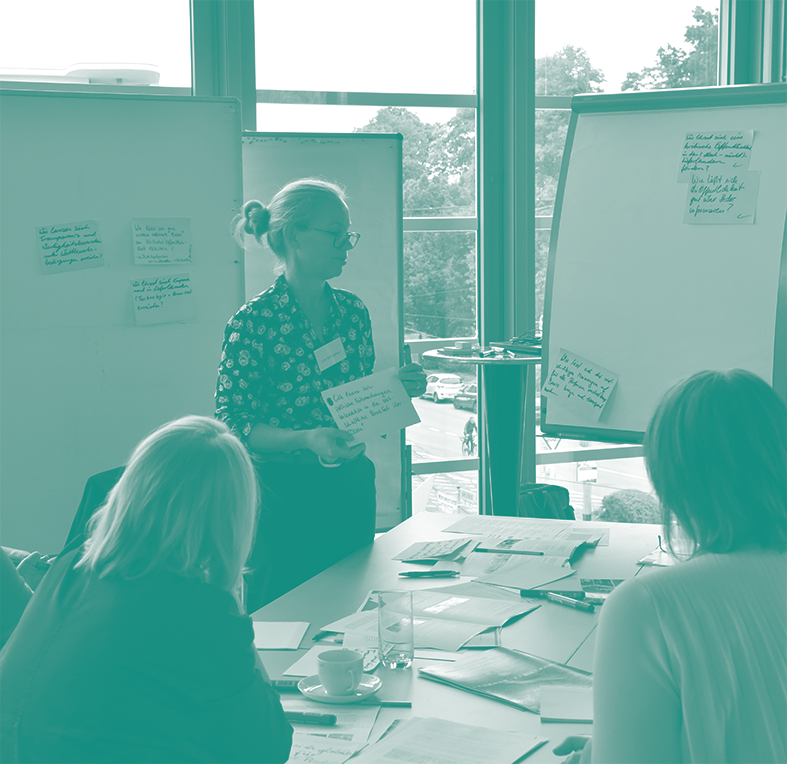
Workshop #1
In the first workshop of the subproject, the project goal and work mode were jointly defined and recorded in a briefing. Likewise, a basic structure of the guidelines was developed with the help of a grid.
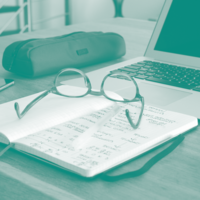
Review Phase #1
In the first review phase, project members were able to provide further input on the results from Workshop #1. In this way, the content was further developed and a common understanding of the project was established.

Workshop #2
In the second workshop, the interrelationships and synergy potentials between this subproject and the other three subprojects were first worked out. Subsequently, the structure of the guidelines was refined and the first methods and case studies were collected within this structure.

Review Phase #2
In the second review phase, the connections between all four subprojects developed in the workshop were concretized. Project members were asked to compile relevant design methods and case studies for the guidelines.

Workshop #3
Workshop #3 marks a turning point in the course of the project. After the previous design of the rough structure of the guidelines and a first collection of methods, the concrete content structure of the guidelines was further co-creatively developed and the responsibilities for different parts of the guidelines were divided among the members. This changes the working mode to a primarily asynchronous process, which initially aims at writing down the contents of the guidelines.

Review Phase #3 (writing phase)
The third review phase consisted mainly of the actual writing process in smaller co-author teams. In this context, an "Author's Guide" was published during the review phase to support the writing process.

Workshop #4
Workshop #4 dealt with the concrete work on the immediate text documents of the individual co-author teams, both in plenary and in small groups. The texts were reviewed by previously selected internal reviewers and further developed in the workshop.

Asynchronous Writing & Reviewing Process
In this final writing and reviewing process the groups of co-authors continued to elaborate on the various chapters of the "Handbook of Leather Design for Sustainable Development". This process was supported by external proofreading and copyediting before the final manuscript was layouted and prepared for publication.
Download a clear summary of the sub-project here.
